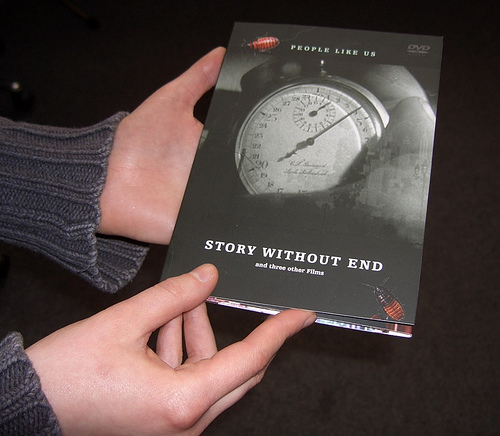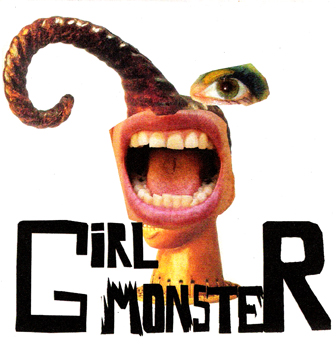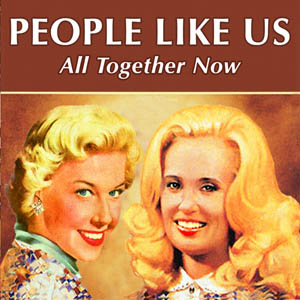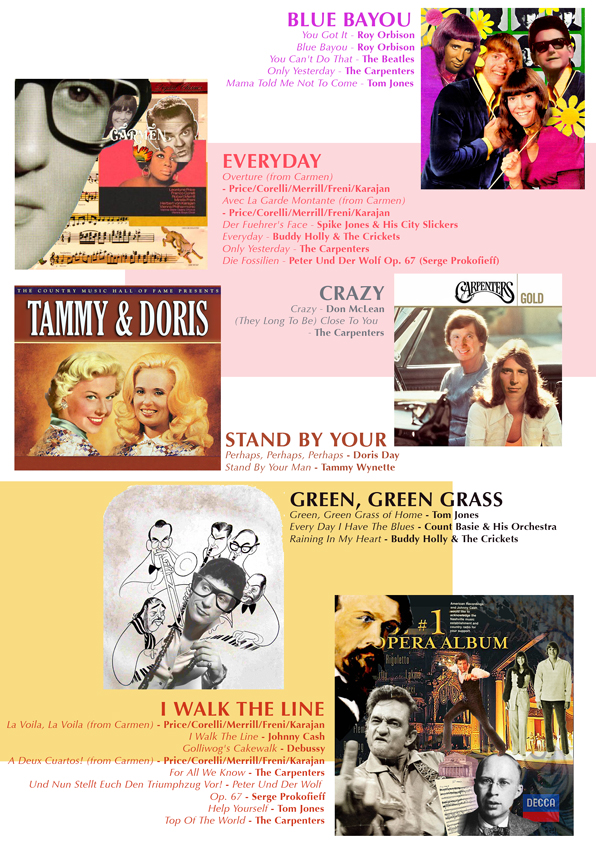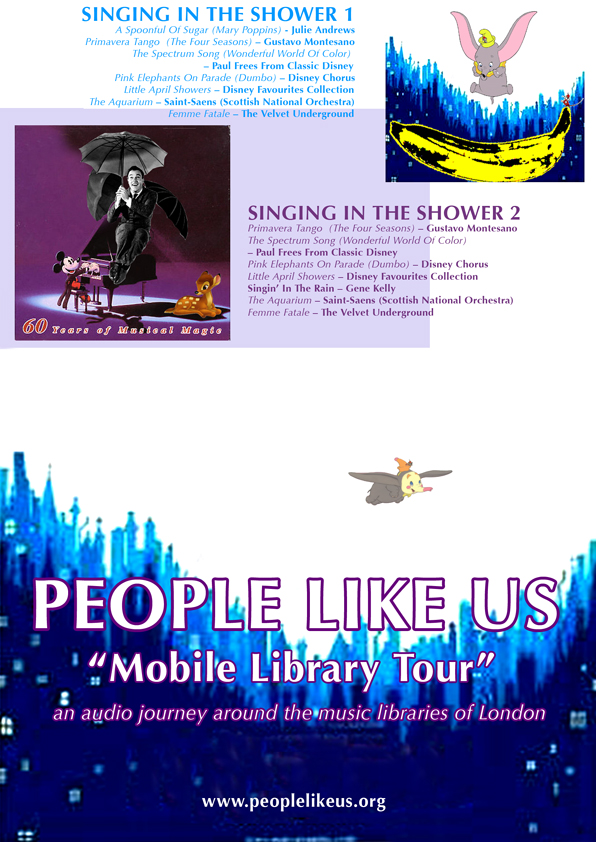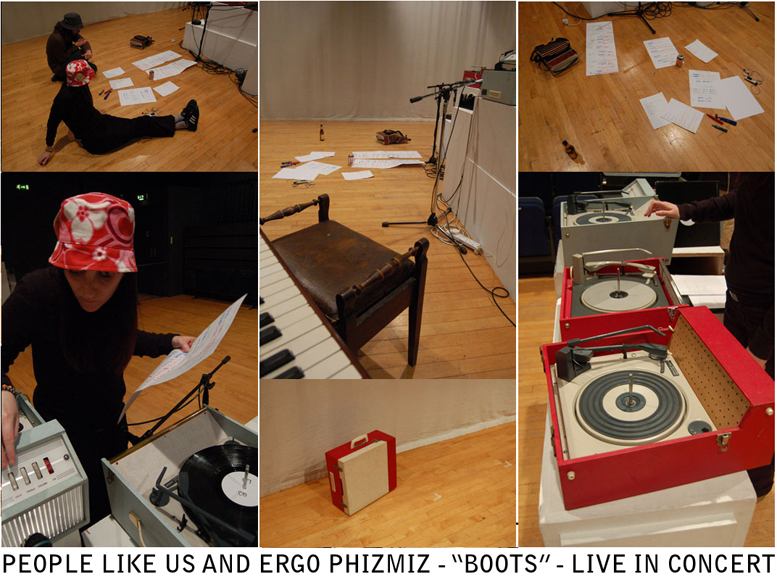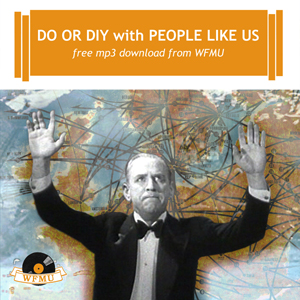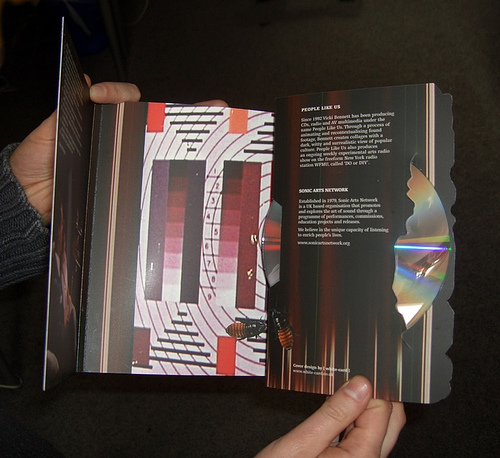
Sonic Arts Network proudly presents a collection of short films by leading British A/V artist People Like Us, a true champion of a particularly English sense of humour. The DVD shows a journey though a multi-layered 20th Century, represented by bright eyed and enthusiastic images of the modern world, concluding with the new Sonic Arts Network commission ‘Story Without End”. Each of these films are available on this page, through UbuWeb, for free download in mp4 format. However, if you would also like the DVD, which has beautiful fold-out packaging, go to our shop. All prices include postage and packing
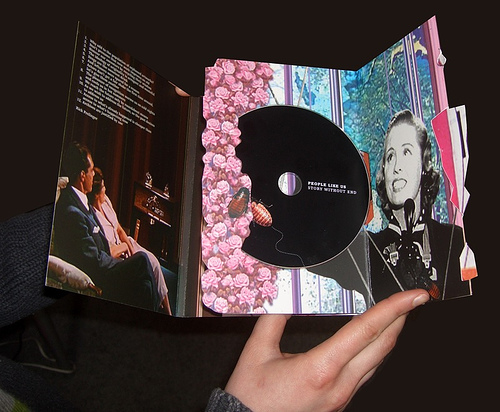
Scans of Reviews here:
Story Without End – Review in Jazzthetik July 2006
Story Without End – Review in Trax Magazine June 2006
Story Without End – Review in Black Jan 2006
Story Without End – Review and Interview April 2006
Story Without End – Review in Cinemania May 2006
Story Without End – Review in The Wire May 2006
Story Without End – Blow Up February 2006
Story Without End – Rock Delux Magazine February 2006
Story Without End – Magic Magazine February 2006
Story Without End – Debug Magazine January 2006
Story Without End – Intro Magazine February 2006
Story Without End – Sonic Seducer Magazine February 2006
Story Without End – D Side Magazine January 2006
Story Without End – Go Magazine January 2006
Story Without End – Bad Alchemy Magazine January 2006
Story Without End – Clone Magazine January 2006
Story Without End – Metro Magazine Summer 2005
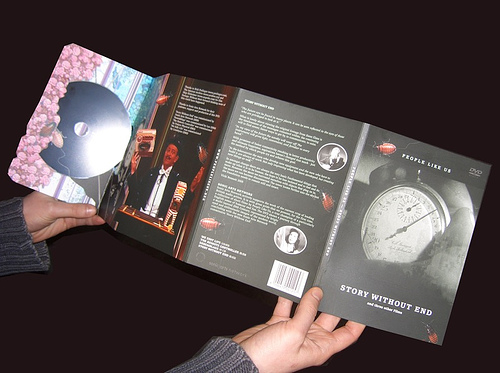
Story Without End (and three other Films) – review
Music videos for mash-ups are rarely as enjoyable as the audio originals – the pleasure of the sound collage is the simultaneity of clashing spaces, where visual montage makes us choose between one space or another through sequence. The web is awash in video cut-ups today; giddy editors take advantage of bountiful source material in online archives, easy desktop editing software and mostly free distribution through video.google or youtube.com. Surrealist film technique is the stuff of late-night television comedy, as each day’s presidential speeches are cut up and re-arranged for comedic effect.
This explosion of montage only highlights the differences between sound collage and video pastiche. Multi-track recorders, turntables, samplers and sequencers gave us densities no film editor could dream of. Yet sometimes film collage carries a more obviously political impact – visual juxtapositions seem to jar more directly.
Into this dynamic steps the singular art of PEOPLE LIKE US. At the controls is artist Vicki Bennett, a masterful and prolific sound-collagist whose works in video have been recently released by the Sonic Arts Network as a DVD. Where traditional montage makes us choose between one cut or another, Bennett’s meticulous work relies on compositing, masks, and mattes to create a visual simultaneity every bit as dense as what we hear in her music.
Through four works, completed between 2002 and 2005, Bennett has extracted various subjects from their backgrounds, and backgrounds from their contexts. Recombined, these artifacts occasionally grow synchronous with sound, but always stand out in contrast to each other. As in some of the more jarring mash-ups one might encounter on Bennett’s radio shows for WFMU, the seams are far from hidden. A boy sets a toy house down upon a giant circuit board – later we see him again laying out his little town on a pumpkin patch.
Opacities and edges blur to give way to various cohabiting characters – a man peers into a screen to reveal another composited world, even as he’s oblivious to the third one above him, or the beetles crawling over the screen on yet a fourth layer. Narrators stand above it all, promising all sorts of things to come. Bennett introduces each new element as she would a new loop in her sonic compositions, and lets us hold it all in our head for a moment (or sometimes far longer – she loves repetition) before moving on to something else. It’s a happy marriage of pastiche in sound and video that helps demonstrate the musicality of vision – the work is more Vertov than Eisenstein.
All of this makes STORY WITHOUT END a welcome and rare addition to the lively world of the cut-up. Bennett’s films offer much more than this, however. After all, as the narrator of THE REMOTE CONTROLLER tells us, “mixing is so simple, a child could do it.”
Directing Bennett’s deft and patient hand at the mouse is a very specific sort of curiosity, and a particular approach to human creation and action. These films are the result of countless hours of sifting through the archives of various digital and physical collections. Specifically named in the credits are the collections of Rick Prelinger at The Internet Archive (http://www.archive.org), Skip Elsheimer’s avgeeks.com, and London’s Lux collection of avant-garde film. Except for some footage of Bennett’s own screen desktop in WE EDIT LIFE, none of Bennett’s source material appears to be self-generated. She even borrows from herself, recycling audio or video from old works in new.
The result is a very specific kind of collection. Though individual elements within a frame are composited to remain estranged from one another, the ingredients add up to a whole that’s from a particular palette, a specific time and place. In all four of these works, we see and hear hopeful proponents of techno-marvels from modernity’s golden age. Men and women hunch over vintage screens and typewriters, monitoring, tweaking and enjoying newfound power through perfect analog connections. Telephone operators, orchestra conductors, audio engineers, and city planners listen to the spaces on the other side of an edit, command our attention, or carry out plans via remote operation.
We see an artist and an engineer negotiate a new collaboration; we get transferred by a series of attractive switchboard operators from Chicago to Wabash. Maps and radar, puppet strings and monitors mediate the relations between distant actors. Throughout it all, Bennett plays an equally magical role, creating new seamless spaces through edits, as her subjects create spaces through telepresent connections. These hopeful operators and technicians are people like us, twiddling knobs at a remote, if enamored, distance. By revealing her own hand, Bennett identifies herself with the films’ optimistic subjects, who according to their narrators “merely push a button and let something else do the work.” Another narrator adds, “the result is breathtaking beauty, and lasting good taste.”
Like Craig Baldwin in SPECTRES OF THE SPECTRUM, Bennett tells a story of hope about technology, using the artifacts of a more hopeful age. Her films marry medium to message to reveal the folly of such hope, yet without resorting to irony. Refreshingly gentle and humble, the work relies on humor, awkwardness, and empathy to produce skepticism without cynicism. If through her reliance on found materials Bennett lacks the faith of scientist-magicians who create something from nothing, she shares their joy at seeing pushbuttons produce results.
In the tradition of modernist reflexivity, Bennett relies on the stutter, the scratch or pause to call attention to her own hand. Importantly though, she reminds us that stutters and burps are also human, and funny. Laughter is likely to be one’s first and lasting reaction to Bennett’s work in sound and video – so much so that perhaps this act of analysis might seem absurd. Close examination of the works on STORY WITHOUT END yield rich results, however, and make me grateful for Bennett’s generous and labored marriage of humor and criticism.
Kevin Hamilton
February 13, 2006
http://www.kevinhamilton.org
